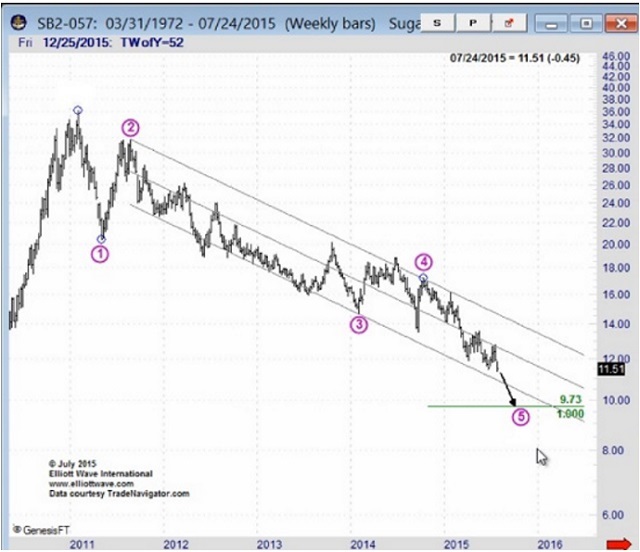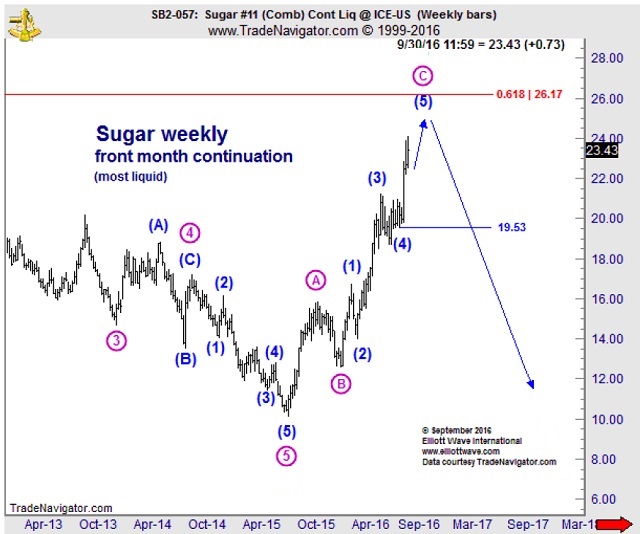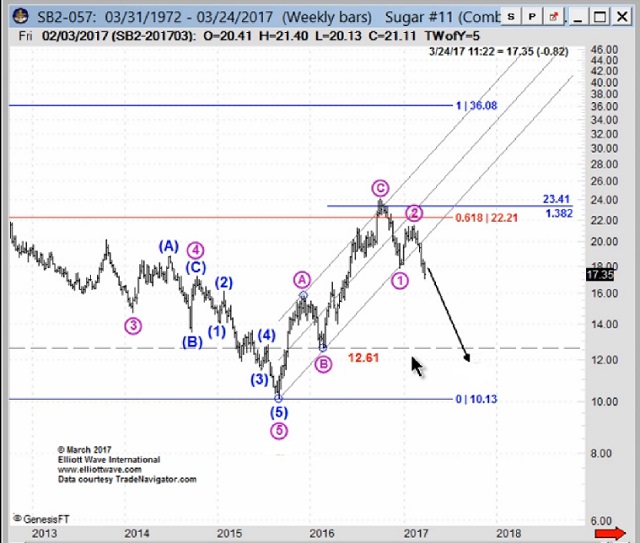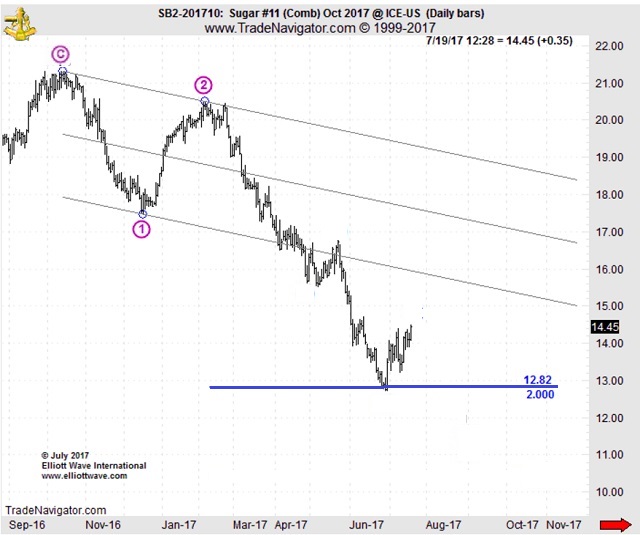Over the last two years, sugar futures have crashed and spiked and crashed again — much like a diabetic without insulin.
After plummeting to an 8-year low in September 2015, sugar prices then doubled in a stunning rally to a 4-year high in September 2016, only to turn back down in a 40% sell-off to19-month lows in late June 2017, where they linger to this day.
For nimble investors and traders, these kinds of erratic price swings are what opportunities are made of — so long as they catch those moves before they occur and not after. It just so happens, we know someone who did just that.
Here, we turn the floor over to our chief commodities analyst Jeffrey Kennedy and his archived analysis of sugar since 2015.
The time: Mid-2015. Sugar prices are about as sweet as curdled milk, circling the drain of an 8-year low as the market is mired in a relentless bear market. Wrote an August 4, 2015 Wall Street Journal:
“The futures sugar market in New York behaves like an endless rerun of a horror movie.”
But, according to Jeffrey Kenney, this “horror movie” was about to enjoy a happy turn of events. In his July 2015 Monthly Commodity Junctures, Jeffrey outlined a very bullish scenario for sugar, including these details:
“I’ve noticed over the years that significant turning points tend to occur in years ending 0 and 5… as we move into 2015, I’m actually anticipating a significant low. I’m looking for prices to bottom this year.
“I believe we’re in the very late stages of the initial move down. Ideally, say as move into the fourth quarter of 2015, the [decline] will terminate ant that will give way to an advance where I expect sugar prices to actually double.
“Once we do finish this move down, I will be looking for a sizable move, something that will easily push prices back up to 18, 20, even as high as 22.”
What happened next?
Sugar prices bottomed in late September 2015, the “fourth quarter” time window that Jeffrey had identified.
By September 2016, sugar prices exploded upward in a 90%-plus rally to Jeffrey’s 22 cents/pound price target.
By then, Jeffrey’s analysis warned that the time for another dramatic turn had arrived — this time, lower. Here, the September 29, 2016 Daily Commodity Junctures laid out the likely course ahead:
“Basis the March contract, the preferred wave interpretation favors Sugar rising in five waves from 20.10 into the 24.87 neighborhood. Doing so is scheduled to complete a larger degree five wave advance from 13.48 basis March… as well as an even larger wave degree three wave corrective rally sequence from 10.13 basis front month continuation.
“This projected market top should then set the stage for igniting subsequent selling pressure in five waves at weekly chart level.”
Again sugar prices closely followed its Elliott wave script, rallying a bit further before losing its grip on the upside — and falling 20%-plus before stalling in spring of 2017.
At the time, Jeffrey refocused his attention on sugar, featuring the market in his March 2017 Monthly Commodity Junctures. There, Jeffrey explained how sugar prices had taken the first “step” in confirming a renewed downtrend; i.e. they had penetrated the lower boundary line of the corrective price channel. Jeffrey affirmed:
“Everything seems to be on track for lower prices.
“The attention is now focused to the downside. The objective I offered to at least below 12.61. Nothing has changed and that idea is still very much intact.”
From there, sugar prices plummeted another 20% to their lowest level in 19 months in late June. The next chart captures the market’s precipitous drop in full detail:
The fact is, commodities are some of the most volatile markets in the world. And, fact is, Elliott wave analysis doesn’t always deliver wave counts as strong and clear as the one’s Jeffrey has identified in sugar over the last two years.
But you can always count on Elliott wave to deliver 100% objective insight into a market’s near-, and long-term potential.




